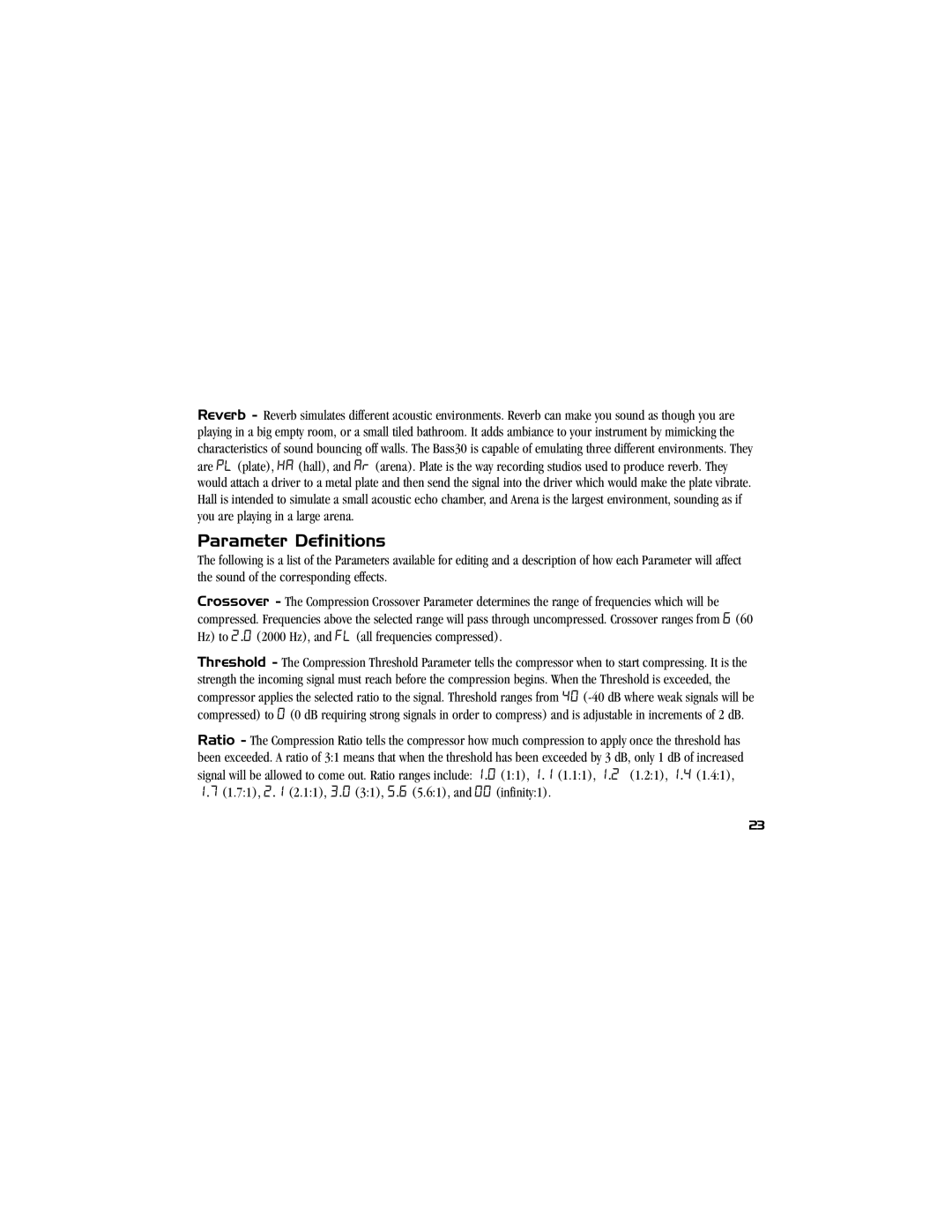Reverb - Reverb simulates different acoustic environments. Reverb can make you sound as though you are playing in a big empty room, or a small tiled bathroom. It adds ambiance to your instrument by mimicking the characteristics of sound bouncing off walls. The Bass30 is capable of emulating three different environments. They are PL (plate), HA (hall), and Ar (arena). Plate is the way recording studios used to produce reverb. They would attach a driver to a metal plate and then send the signal into the driver which would make the plate vibrate. Hall is intended to simulate a small acoustic echo chamber, and Arena is the largest environment, sounding as if you are playing in a large arena.
Parameter Definitions
The following is a list of the Parameters available for editing and a description of how each Parameter will affect the sound of the corresponding effects.
Crossover - The Compression Crossover Parameter determines the range of frequencies which will be compressed. Frequencies above the selected range will pass through uncompressed. Crossover ranges from 6 (60 Hz) to 2.0 (2000 Hz), and FL (all frequencies compressed).
Threshold - The Compression Threshold Parameter tells the compressor when to start compressing. It is the strength the incoming signal must reach before the compression begins. When the Threshold is exceeded, the compressor applies the selected ratio to the signal. Threshold ranges from 40
Ratio - The Compression Ratio tells the compressor how much compression to apply once the threshold has been exceeded. A ratio of 3:1 means that when the threshold has been exceeded by 3 dB, only 1 dB of increased signal will be allowed to come out. Ratio ranges include: 1.0 (1:1), 1.1 (1.1:1), 1.2 (1.2:1), 1.4 (1.4:1), 1.7 (1.7:1), 2.1 (2.1:1), 3.0 (3:1), 5.6 (5.6:1), and 00 (infinity:1).
23
